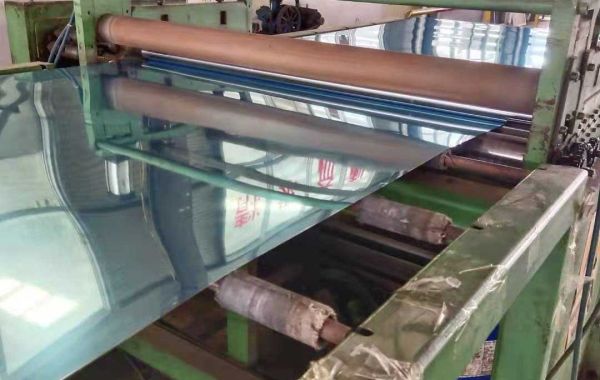I. Introduction
Aluminium Sheet: Aluminum sheets are flat sheets of aluminum that come in various thicknesses and sizes. They are widely used in construction, automotive, aerospace and other industries due to their light weight, corrosion resistance and high strength-to-weight ratio. Aluminum sheet can be further processed by cutting, bending, welding, machining to meet specific requirements. They are available in different alloys such as 3003 aluminium sheets, 6061 aluminium sheets, 5052 aluminium sheets and 5083 aluminium sheets, each with unique properties for different applications.
Mirror Aluminium: Mirror aluminum is aluminum sheet that has undergone particular surface processing to produce a reflective, mirror-like look. Typically, "mirror polishing" or coating the aluminum sheet with reflective material produces the reflecting surface. Aluminum with a mirror finish is typically utilized for decorative projects including architectural embellishment, signs, and reflective panels. It offers a shiny surface with a beautiful appearance that improves the aesthetics of numerous applications.
This article will compare and contrast the qualities, uses, and relationships of aluminum sheet and mirror aluminum as well as instruct you on the proper choosing of both aluminum products.
II. Properties of Aluminum Sheet
Aluminum sheet is made from pure aluminum or aluminum alloy, a combination of aluminum and other metals. Aluminum sheet(such as commonly used 3003 aluminum plate etc.) is thermally conductive, lightweight, and ductile. Its melting point is 660°C, and its density is roughly 2.7 g/cm3. Aluminum sheet has a high strength-to-weight ratio, making it appropriate for use in a wide range of applications that call for great strength and low weight. It possesses 276 MPa of yield strength and 310 MPa of tensile strength.Because a thin layer of aluminum oxide has formed on the surface of aluminum sheet, it possesses good corrosion resistance.
III. Properties of Mirror Aluminum
Mirror aluminum is made of pure aluminum or an aluminum alloy that is polished to obtain a reflective surface.1050 mirror aluminium is the most used aluminum alloy, which has a reflectivity of up to 85%. Polishing creates a highly reflecting surface on the aluminum with a mirror finish. It has a melting point of 660°C and a density of 2.7 g/cm3. High strength applications cannot use it because of its low strength (60 MPa tensile, 25 MPa yield). Mirrored aluminum, on the other hand, has considerable corrosion resistance, although exposure to corrosive chemicals can damage its reflecting surface.
IV. Application of Aluminum Sheet
Aluminum sheets are commonly used in construction industry, automobile industry, aerospace industry and shipbuilding industry etc. In the construction industry: Aluminum panels are used to support structural components such as beams and columns. It is also used for roofing and cladding; in the automotive industry: aluminum sheets are used for body panels, wheels and engine components. It is also used in heat exchangers and radiators; in the aerospace industry: aluminum sheets are used to make aircraft components such as wings, fuselages, landing gears; in the shipbuilding industry: aluminum sheets are used in shipbuilding and hull construction due to their corrosion resistance shipbuilding industry.
V. Applications of Mirror Aluminum
Mirrored aluminum plates are widely used in lighting fixtures, solar energy, interior decoration, electronics and signage and displays in industries such as lamps, reflectors and decorative lighting; concentrating solar power (CSP) systems; wall panels, ceilings, furniture upholstery and decorative strips; cell phones, tablets, and laptops; billboards, store signs, booths and trade show displays.
VI. The Relationship Between Aluminum Plate and Mirror Aluminum
Similarity: The base material of the mirror aluminum sheet and the ordinary aluminum plate is the same, both are aluminum. They are usually composed of high-purity aluminum alloys, so both types of aluminum sheets have similar physical and chemical properties. Such as good durability, corrosion resistance, lightness, thermal conductivity, versatility, and certain reflectivity.
Differences: The main difference between mirror aluminium sheet and ordinary aluminium sheet lies in the surface finish and mechanical properties. The former has a high surface finish, excellent reflectivity and can achieve a mirror effect, while the surface finish of ordinary aluminium sheet is usually matt or brushed; the latter is stronger than the former and more powerful.
Combination: The combination of mirrored aluminium and aluminum sheets can enhance the overall look of the application, giving it a sleek, modern look while benefiting from the strength and longevity of aluminum and enjoying the aesthetics of a mirror. Examples include interior and exterior cladding, decorative panels, ceiling and wall coverings for architectural projects. As well as furniture, art installations, signage and displays, and more.
Vii. How To Choose The Right Type Of Aluminum For Your Project
Factors to Consider: When choosing between aluminum plate and mirror aluminum, consider factors such as strength, reflectivity, corrosion resistance, and cost.
Cost: Mirror aluminum is generally more expensive than aluminum plate due to the additional processing required to obtain a reflective surface.Availability: Aluminum plate is more commonly available than mirror aluminum, which may affect your choice depending on your location.Project Requirements: Consider the specific requirements of your project, such as whether high strength or high reflectivity is more important.
VIII. Maintenance and Care for Aluminum Plate and Mirror Aluminum
Cleaning and polishing: It's critical to frequently clean mirror aluminum with a soft cloth and a light detergent to preserve its aesthetic appeal. Similar cleaning techniques work on aluminum plates. For the purpose of removing scratches or other flaws, polishing could also be necessary.
Protection from harm: Harsh chemicals or impacts have the potential to harm aluminum mirror as well as aluminum plate. Avoid laying heavy objects on them, and use protective coatings or films if necessary to safeguard them from harm.
Repair or replacement:If the aluminum mirror or plate cannot be repaired, it may need to be replaced. Consult a specialist for guidance on upkeep or replacement.
IX. Conclusion
In conclusion, there are two distinct types of aluminum: mirror aluminum and aluminum plate, each with unique properties and applications. By comprehending how they interact to one another, you may select the optimum type of aluminum for your project and get a combination of strength and beauty. By performing routine maintenance and care, you may extend the life and durability of your aluminum alloy.







